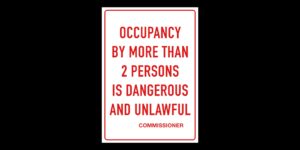Understanding Anxiety and Panic Attacks
Dr. Aryn Ziehnert
The term “panic attack” has entered our everyday lexicon and many individuals now use it to describe a state of being incredibly worried. Perhaps you have heard people around you use the term to portray their own experiences of being anxious, statements such as, “I had a panic attack when I couldn’t find my phone,” or “Don’t scare me like that, you gave me a panic attack!” Considering the intricate link between anxiety and panic attacks, it makes sense that individuals would use the panic attack to try and depict the high anxiety they felt at the moment.
 For individuals who have had a true panic attack, however, statements like those above can feel like others are watering down what it feels like to be in an actual state of acute physiological arousal. While high anxiety is uncomfortable, panic attacks generally feel like a point of departure – similar to how individuals differentiate between headaches and migraines.
For individuals who have had a true panic attack, however, statements like those above can feel like others are watering down what it feels like to be in an actual state of acute physiological arousal. While high anxiety is uncomfortable, panic attacks generally feel like a point of departure – similar to how individuals differentiate between headaches and migraines.
Maybe you are that individual who feels like others are watering down their experience of a true panic attack. Or, at this point, maybe you are questioning whether your experiences are considered true panic attacks. So let’s talk about what a panic attack is and what you should do if you have had an attack.
What is a Panic Attack?
The following description of a panic attack comes to us from the Diagnostic and Statistical Manual of Mental Disorders, which is a diagnostic tool used by many mental health professionals. According to this text, panic attacks involve a sudden, acute influx of either fear or discomfort that peaks within minutes (approximately 5–10-minute peak). On a 0-100 scale of distress (with 100 being the high point), the apex of a panic attack generally reaches the 90-100 level.
It may be helpful to know that this influx of fear or discomfort can come seemingly out of the blue (what is referred to as an unexpected attack) and does not always have an obvious cue or trigger (when it does, this is referred to as an expected attack; for example, an individual getting behind the wheel the first time following their being in a significant car accident).
These intense emotions are accompanied by a variety of physiological and cognitive symptoms, of which a minimum of four are required to meet the threshold for diagnosis. Examples of physiological symptoms include:
- Difficulty breathing
- Dizziness or light-headedness
- Hot flashes or cold sweats
- Numbness or tingling in the extremities
- Rapid heart rate, or heart pounding
- Trembling
 In terms of cognitive symptoms, individuals experiencing panic attacks may report thoughts about losing control of their bodies, going crazy, or dying. Given the overlap of physiological symptoms between panic attacks and life-threatening medical conditions (e.g., heart attacks), it is not surprising that these fearful thoughts occur.
In terms of cognitive symptoms, individuals experiencing panic attacks may report thoughts about losing control of their bodies, going crazy, or dying. Given the overlap of physiological symptoms between panic attacks and life-threatening medical conditions (e.g., heart attacks), it is not surprising that these fearful thoughts occur.
It is likely also not surprising that many individuals who are experiencing panic attacks will visit the emergency department, with one study reporting panic attacks accounting for roughly 20% of visits to the emergency room each year.
The description above should highlight some key differences between the experience of high anxiety and panic attacks. First, while distressing, high anxiety generally does not reach the 90-100 level of distress as one is experiencing it; this is the “acute” aspect of the definition of panic attacks. Panic attacks also involve a sudden influx, meaning that an individual goes from a lower level of distress up to a ninety level in a matter of milliseconds.
Additionally, the symptom presentation can be a differentiator between high anxiety and panic. While some of the same symptoms may be present in high anxiety (e.g., light-headedness), most will not. And for those symptoms that are present, they generally are present in a lower-grade form. Anxiety and panic attacks are not mutually exclusive, meaning a person can experience both simultaneously.
A person who experiences both may exist in an already heightened level of anxiety (e.g., a baseline sixty level of distress), have a panic attack for approximately 5-10 minutes (go up to ninety-five level of distress), and then go back down to a heightened level of anxiety (60 level of distress).
I Had a Panic Attack: What Should I Do?
Hopefully, at this point, you have a better understanding of what a panic attack is and how it is different from anxiety. And if the above description sounds like an experience you have had, you are not alone: it is estimated that nearly 1 in 4 individuals will have a panic attack within their lifetime.
So what should you do about this experience? I have two recommended steps you can take that occur outside of the context of a future attack. First, touch base with your primary care physician if you have not already. Any time you are experiencing abnormal and/or distressing bodily symptoms, it is wise to seek medical counsel.
Because of the symptom overlap between panic attacks and other medical conditions, the best thing you can do is talk with your doctor so they can rule out any medical conditions that would warrant further treatment.
If your medical provider has given you the all-clear, the second step is to recognize that you may not even have another panic attack. Of the 1 in 4 individuals who will experience a panic attack in their lives, only a small portion (12%) report having four or more attacks.
 This suggests that having one panic attack in your life does not immediately sentence you to a lifetime of panic attacks, which can help ease the anxiety you may have about the possibility of future attacks.
This suggests that having one panic attack in your life does not immediately sentence you to a lifetime of panic attacks, which can help ease the anxiety you may have about the possibility of future attacks.
Equipping yourself with tactics to deal with future panic attacks – even if they are not guaranteed to occur – can be wise. Some of the tactics best suited to deal with panic attacks (or high anxiety in general) play on a structure in our body known as the autonomic nervous system (ANS). The ANS is involved in our involuntary (automatic) physiological processes and has two primary branches: the parasympathetic nervous system and the sympathetic nervous system.
The parasympathetic branch can be thought of as the “rest and digest” aspect of the ANS and is involved in the long-term building projects that our bodies need to undergo to thrive (e.g., activating the stomach to digest the delicious meal you just ate). The sympathetic branch can be thought of as the “fight, flight, freeze” aspect of the ANS and is involved in getting our body prepared in the moment to handle a threatening situation (e.g., increasing our heart rate so that blood is flowing quickly to our extremities).
It’s important to note that the parasympathetic and sympathetic branches work on the same areas of our bodies in the exact opposite ways; for example, the parasympathetic branch constricts our pupils whereas the sympathetic branch dilates our pupils. Because these two systems work in opposite ways in the same areas of the body, they cannot be simultaneously activated.
The physiological symptoms of panic attacks described earlier are the direct result of sympathetic nervous system activation and the flooding of chemicals that your body uses to mobilize for action. And while the sympathetic nervous system is incredibly advantageous for us in the face of a present danger, it is not particularly helpful when there is no real threat.
So a great way to handle a panic attack is to find ways to “trick” your body into deactivating the sympathetic nervous system and activating the parasympathetic nervous system. By getting your body to activate the parasympathetic branch, you are essentially communicating to your body, “Hey, everything is fine. We can rest and digest.”
The following three tactics are great ways of communicating to your body that mobilizing for action is not necessary:
Deep breaths, with longer exhales. Did you know that the sympathetic nervous system is activated when we inhale, and the parasympathetic nervous system is activated when we exhale? This is partially why breathing exercises are recommended in a variety of treatment protocols for anxiety-related disorders. There are a couple of breathing techniques that play on this idea of longer exhales, including:
- Inhale for five beats, exhale for seven beats
- Box breathing (inhale for five beats, hold your breath for five beats, exhale for five beats, hold your breath for five beats)
 Chew gum or eat something small.
Chew gum or eat something small.
The sympathetic nervous system inhibits saliva production (you may have noticed your mouth going dry in anxiety-provoking situations) and the parasympathetic nervous system stimulates saliva production (a key role in digestion). If you can tolerate chewing gum or eating something small (a peppermint, a sour candy), this can be a way to trick your body into thinking it’s not in a state of stress.
Focus your mind on complex mental activities. Complex mental activities can help to increase blood flow to the brain as well as divert our attention so that we are not continuing to cognitively activate the stress response. Examples of complex mental activities that you can try out:
- Practice your multiplication tables, starting with a number higher than three (e.g., starting with six – 6 x 1, 6 x 2, etc.)
- Practice your subtraction skills, starting with a large number and choosing a tricky number to deduce (e.g., starting with one thousand, subtracting seven each time)
- The ABC game: Choose a theme and then name an object within that theme for every letter of the alphabet (e.g., “food”: Apple, Banana, Corn, etc.)
The above list is not an exhaustive one. There are other tactics that you can take in a more consistent, long-term form that will help to navigate anxiety and panic attacks (e.g., getting sleep, exercising regularly). As one final recommendation for a tactic that may help in the moment should another panic attack occur, remember the definition of panic attacks: a sudden influx of fear or discomfort that peaks within minutes. So, while it’s beyond uncomfortable in the moment, it will not last forever.
Anxiety and Panic Attacks: A Final Word
We have now discussed what a panic attack is and suggestions for dealing with the symptoms surrounding it. The final piece to address is when should you consider seeking out therapeutic help to manage the experience.
You may want to consider seeking mental health services for panic attacks if one or more of the following occur:
- You have recurrent panic attacks.
- Your baseline anxiety outside of the context of a panic attack is moderately and consistently high (e.g., regularly above a thirty on the level of distress).
- You experience significant distress regarding the possibility of future panic attacks.
- As a result of the anxiety or panic attacks, you have maladaptively changed your behavior (e.g., you are engaging in substance use to cope; you are avoiding going to places in which you worry another attack may occur)
Should any of the above match your experience, consider reaching out. A therapist can provide tailored skills and techniques to help you in your specific circumstances.
References:
American Psychiatric Association. (2022). Diagnostic and statistical manual of mental disorders (5th ed., Text Revision). Washington, DC: Author.
Majori, S., Gazzani, D., Paiano, J., Carobolante, B., Sannino, A., Ferrari, S., Antolini, L., Aprili, I., & Zanon, M. (2019). The Prevalence of patients with panic attacks (PAs) and panic disorder (PD) visiting Emergency Departments of the Verona Hospital. Annali di igiene : medicina preventiva e di comunita, 31(2), 93–108. https://doi.org/10.7416/ai.2019.2262
Kessler, R. C., Chiu, W. T., Jin, R., Ruscio, A. M., Shear, K., & Walters, E. E. (2006). The epidemiology of panic attacks, panic disorder, and agoraphobia in the National Comorbidity Survey Replication. Archives of general psychiatry, 63(4), 415–424. https://doi.org/10.1001/archpsyc.63.4.415
“Depressed”, Courtesy of Joice Kelly, Unsplash.com, CC0 License; “But is it art?”, Courtesy of Jene Stephaniuk, Unsplash.com, CC0 License; “Calm Sea”, Courtesy of Jan Tinneberg, Unsplash.com, CC0 License; “Time Test”, Courtesy of Chris Liverani, Unsplash.com, CC0 License







